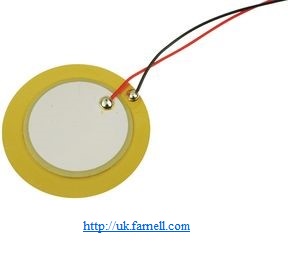Physical Science Lesson Plans
Fuel Cells & Redox Reactions
Author: Sandra Gebhard
Summary:
Students will use the metal of their choice as the catalyst in a simple fuel cell to make connections between fuel cells and redox concepts. They will be required to develop analysis questions based on their results, write balanced equations (using the half reaction method), and identify the oxidized and reduced species involved in the production of electricity from a fuel cell.
Complete Lesson Plan
Spinning Polymer Solutions for Life's Solutions
Author: Erica Wilkes
Summary:
Students focus on the concept of polarity and how "like dissolves like" by experimenting with polystyrene and starch packing peanuts and trying to dissolve them in water and d-Limonene. Within the lesson, students learn about how polymer solutions are created in the process of electrospinning. This leads to the engineering design challenge where students design a water filtration system to remove copper out of water for the purpose of modeling real life application of nanofibers created from electrospinning.
Complete Lesson Plan
Supplemental PowerPoint on Electrospinning
Predicting the Motion and Limits of Droplets Down Incline Planes
Author: Artemio Perez
Summary:
In this lesson, students will learn that different size-fluid droplets behave differently than solid-rigid objects sliding down incline planes. The students will use different surfaces like bare glass, Rain-X® coated glass and a surface coated with Teflon™ tape (other smooth surfaces may be used) to explore the forces between each surface and deionized water droplets. The students will use different sized droplets and vary the angle of the surface to estimate the coefficient of friction. The students will find that unlike solid-rigid objects, the motion of fluid droplets cannot be predicted the same way using Newton's Laws of linear motion. There are additional energies and forces involved in the motion of a droplet of fluid. The lesson is a great review of incline plane motion with linear dynamics, introduction to fluids dynamics, or science practice of experimentation.
Complete Lesson Plan
Separation Chemistry
Author: Steven Sanden
Summary:
Students will investigate reactions in aqueous solutions by mixing ionic solutions and determine if the reactants formed a precipitate from solution. They will then write complete ionic equations for the precipitation reactions that occurred. Students will also investigate the basics of temperature dependent phase transitioning peptides and how they relate to precipitates and their uses for purifying proteins.
Complete Lesson Plan
The Chemistry of Heat Packs
Author: Sandra Gebhard
Summary:
Students design and build a reusable heat pack. They are required to determine what chemical reaction generates heat and is reusable. A delivery package is designed and tested. Students are encouraged to redesign as needed in every stage of the process until they have a working heat pack. Students analyze their process to determine factors that must be considered in the design for effectiveness and safety of the chemical reaction, package, and ultimately the final product.
Complete Lesson Plan
Using a Materials Course to Teach AP Chemistry Unit "States of Matter"
Author: Stephanie Hunter
Summary:
Students will deepen their understanding of how atomic structure relates to the use and function of materials in our lives. The classes of materials covered in depth are metals, polymers and ceramics. For each materials class students will do some kind of hands on activity and the evaluation will be the student's ability to explain what they are observing based on what they learn about atomic structure. As an idea, an optional field trip connecting science with the arts is suggested.
Complete Lesson Plan
Piezoelectric Power as an Alternative Energy Source?
Author: Andria Keene
Summary:
Day 1: (1/2 day) Hook and Introduction: Students will see how sparks are produced when you chew on Wintergreen Lifesavers and will learn about how more UFO sighting are reported around the time of earthquakes. Both of these phenomena are caused by the piezoelectric effect.
Day 2: Piezoelectric Demo and Lab: Students will learn about the piezoelectric effect and what causes it. They will build a circuit to demonstrate the effect and will redesign their circuit to improve on its output. They will also evaluate their circuit as a feasible means of alternative energy.
Day 3: Research and Design Presentation: Students will research the ways that the piezoelectric effect is being used in current technology as an alternative energy source. They will also create their own idea for a design
.
Complete Lesson Plan
Supplemental PowerPoint
Say "Cheese" for Capacitor
Author: Artemio Perez
Summary:
The students will explore the purpose and function of capacitors in flash cameras through hands-on design on the first day: The students will make their own parallel-plate capacitor using conductive materials (aluminum foil, copper tape foil, etc.) separated by an insulating material (writing paper, wax paper, or other insulated materials). The activity will engage students through inquiry exploration of capacitors and their important function in electric circuits. The second day will give students more structure and reinforcement of additional characteristics of parallel-plate capacitors through computer simulation. The lesson is meant to give an application and conceptual overview of capacitors, which are usually difficult to conceptualize in high school courses.
Complete Lesson Plan
Analyzing Ancient Nanotechnology
Author: James Stewart
Summary:
In this project-based learning activity, students explore the properties of noble metal nanoparticles and the technology used to characterize them. Students start by synthesizing silver and gold nanoparticles. After synthesis, students build their own spectrophotometer using low cost materials and smartphones to analyze their nanoparticles. Once they've analyzed their nanoparticles, students are tasked with recreating the ancient optical effects of the Lycurgus cup by creating a nanoparticle infused "stained glass" project.
Complete Lesson Plan
Microgravity Research Proposal Project
Author: Gwendolyn Martin-Apostolatos
Summary:
Students will be asked to read current research reviews about microgravity and experiments conducted on the International Space Station. Using this information, students will write a proposal for research to be conducted on the International Space Station to further research in microgravity.
Complete Lesson Plan
Can You Help Save the World?
Author: Omari Baines
Summary:
This lesson will allow students to be more aware of the benefits and drawbacks of renewable and nonrenewable
resources through discussion, a group activity, and research. When discussing renewable
energy, they will learn ways in which engineers contribute to the innovation of a more energy efficient
world. Through a lab, students will act as energy engineers and investigate different blade designs to test
the amount of energy output. Students will have a better appreciation of the use of renewable resources
and how energy affects our environment.
Complete Lesson Plan
Gas Chromatography & Biofuel
Author: Stephanie Hunter
Summary:
Teacher demo learning about Gas Chromatography (GC)
Students' design will produce biofuels and then they do a series of tests to characterize the fuel they created, one of which will incorporate the gas chromatographer. The students will be asked to engineer a fuel that meets specific criterion and purpose.
Complete Lesson Plan
Shifting Molecules in 3 dimensions
Author: Nicholas Hutchinson
Summary:
Students will be using MOF unit cell representations of non-orthogonal shapes to practice spatial reasoning and problem solving when having to duplicate one of these shapes using trigonometric functions.
Complete Lesson Plan
Creating Clean Energy Through Redox Reactions
Author: Omari Baines
Summary:
Over the course of this unit, students will learn about reduction-oxidation reactions and how they
connect to everyday life. The lessons will include revisiting the idea of renewable energy, while
learning about fuel cells and catalysts within them. Specifically, students will be able to make a
connection between redox reactions and their use in engineering. The activities within these
lessons will allow students to apply the knowledge obtained in the classroom by understanding
how fuel cells work. Beyond this unit, the concepts learned will function as a building block for
future energy technologies.
Complete Lesson Plan
Introduction to VSEPR Theory and Molecular Geometry
Author: Ileana Bermudez Luna
Summary:
This lesson will require two class periods. On day one, students will watch an introduction video for VSEPR Theory as well as a tutorial video that will enable them to effectively use the computer software called “Avogadro”. During this part of the lesson, students will learn the basics of how to effectively use this molecule editor, such as building molecules, how to determine bond angle, optimization, etc. Students will observe several examples, as well complete different practice exercises. On day two, students will conduct the VSEPR Theory & Molecular Geometry Virtual Lab (see attachments), that will help them explore and understand the relationship between the central atom in a molecule and its bonded terminal atoms, as well as how these determine the molecular geometry of different substances.
Complete Lesson Plan
Introduction to Capacitors Reactions
Author: Henry Cabra
Summary:
Capacitors are physical entity in an electronic system, used to block DC voltages or low and high frequencies AC signals, which pass to another section of a circuit or system. Capacitors are components capable of temporarily storing energy, which is needed a short time later[1]. The activities in this lesson will help to understand the physical behavior of capacitor, identify materials used to build these kind of devices, as well how capacitors could be used in electrical and electronic application.
Complete Lesson Plan
Foam Box Spectroscopy
Author: Nicholas Hutchinson
Summary:
Students will create a spectrometer from a schematic and set of supplies. Students will learn how a spectrometer functions, and will use their own spectrometer to determine the emission spectra of light from different sources, and students will use different colored filters to determines what happens to light when it passes through a filter.
Complete Lesson Plan
Material Properties of 3D Printed Parts
Author: John H. Meyers
Summary:
In this lesson students will be introduced to basic engineering properties of materials like strength, toughness, and elasticity. They will start with a demo of the teacher standing on two different 3D printed objects, one of which will break and another of which will be able to hold the teachers weight. This will spark a discussion on why one will work and the other won’t. Then it will lead into discussing material properties. From there students will learn about various mechanical properties like strength, toughness, and elasticity. Once these principles have been established students will choose a material and test the mechanical properties of that material with a series of 3D printed objects and testing apparatuses. Once the data from their tests have been obtained, students will create a small 8 ½” X 11” poster summarizing their results to be hung in the classroom as a reference for material choice in the future. Finally, students will repeat the process but now with objects that have had some sort of post-processing like vapor smoothing or heat treating to determine the effect of post-processing on material properties.
Complete Lesson Plan
Synthesis of SIFSIX-3-Zn
Author: Erica O'Rourke
Summary:
Students will be synthesizing a simple MOF (Metal organic framework) that can store our greenhouse gas, CO2. Students will use red cabbage as an indicator to decipher pH range.
Complete Lesson Plan








Image courtesy of Wikipedia.com

http://energy.gov/eere/education/teach-andlearn

https://i.ytimg.com

http://www.oldib.bioninja.com.au/higher-level/topic-8-cellrespiration/81-cell-respiration.html

alevelchem.com

http://hyperphysics.phy-astr.gsu.edu/hbase/electric/pplate.html




